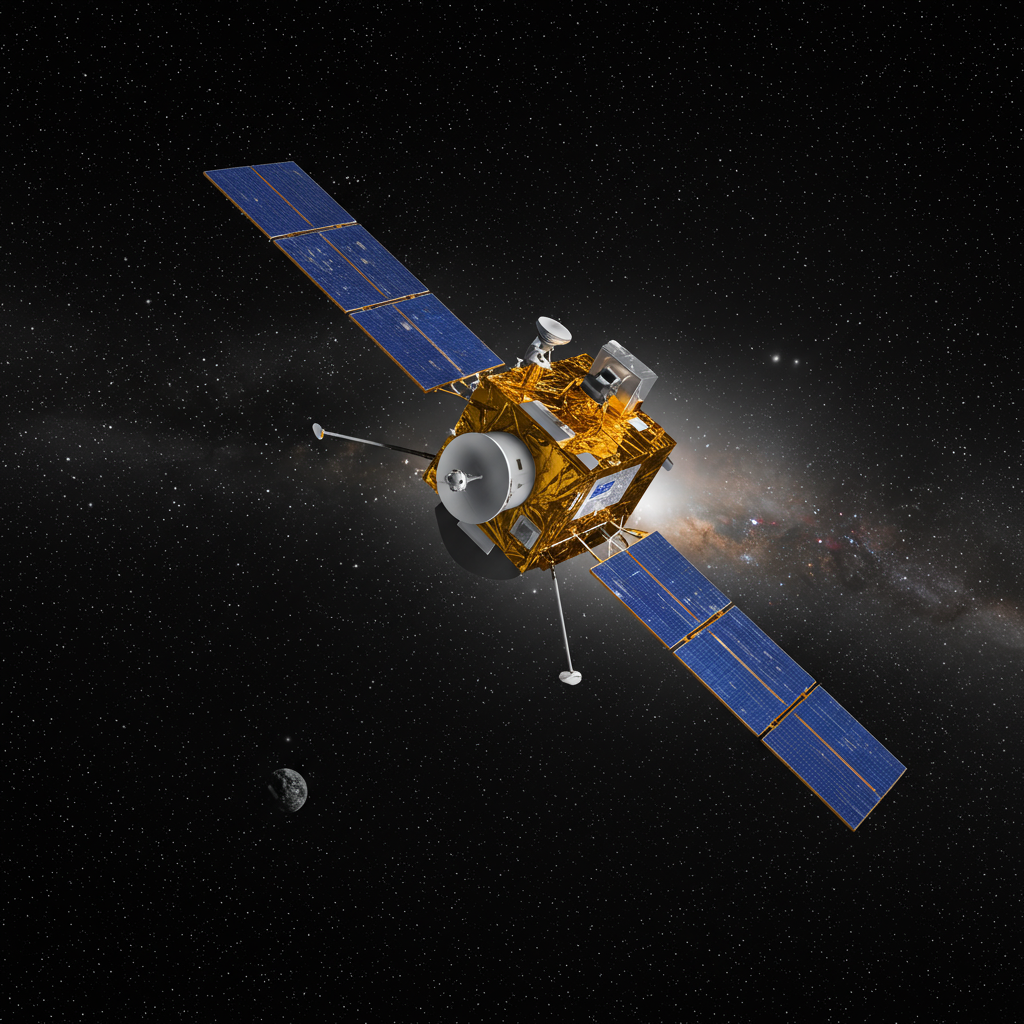NASA’s groundbreaking Psyche mission spacecraft has successfully resolved a propulsion issue, allowing it to resume its crucial journey to a unique metal-rich asteroid. The solar-powered probe, currently millions of miles from Earth, overcame an unexpected technical glitch with its thruster system, demonstrating the resilience and ingenuity of the mission team.
The issue arose in early April 2025 when engineers detected an unusual pressure drop within the primary fuel line feeding the spacecraft’s four solar electric thrusters. This anomaly necessitated a temporary pause in propulsion operations as the team investigated the cause and determined a path forward.
Switching to Backup: A Solution Restores Momentum
After careful analysis, the mission team executed a successful maneuver to switch the spacecraft’s propulsion operations over to a backup fuel line. This critical step proved effective, allowing Psyche to reactivate its sophisticated solar electric propulsion system. This system, which uses the gentle but continuous thrust created by expelling charged xenon atoms, is vital for navigating the vast distances of the solar system.
With the backup line now active, the Psyche spacecraft has resumed its planned trajectory, continuing its 2.2-billion-mile (3.6-billion-kilometer) voyage towards the asteroid belt.
The Psyche Mission: A Journey to a Metal World
Launched on October 13, 2023, aboard a SpaceX Falcon Heavy rocket from NASA’s Kennedy Space Center, the Psyche mission is the first human-made journey specifically targeting a metal-rich asteroid, known as 16 Psyche. Located in the main asteroid belt between Mars and Jupiter, the asteroid Psyche is believed to be the partial core of a planetesimal – one of the building blocks of early rocky planets.
By studying this approximately 173-mile (279-kilometer) wide asteroid, which is thought to be rich in iron and nickel, scientists hope to gain unprecedented insights into how rocky planets, including Earth, formed and developed their metal cores. The mission plans for a 26-month science investigation period once the spacecraft arrives.
The spacecraft is currently en route, utilizing its solar electric propulsion and planning a Mars gravity assist in 2026 to gain speed. Arrival at asteroid Psyche is anticipated in August 2029.
Overcoming Hurdles on the Path to Discovery
This successful resolution of the propulsion issue marks another challenge overcome for the Psyche mission. The project previously faced significant delays, including postponing its initial 2022 launch due to issues with the verification testing of crucial guidance, navigation, and control software. That earlier hurdle led to a thorough review before the mission was ultimately approved to proceed with the later 2023 launch window.
Navigating technical complexities like fuel line pressure drops on a spacecraft millions of miles away requires exceptional engineering skill, echoing the challenges faced and overcome by engineers on other distant probes dealing with aging systems or unexpected anomalies. The ability to switch to backup systems, as demonstrated by Psyche, is a testament to the robust design and dedicated team managing the mission.
In addition to its primary scientific goals, the Psyche spacecraft is also hosting NASA’s Deep Space Optical Communications (DSOC) technology demonstration, testing high-bandwidth laser communications that could revolutionize future deep space missions.
With the propulsion system now fully operational again via the backup line, the Psyche spacecraft is back on course, continuing its vital journey to unlock secrets about planet formation held within a metal asteroid.




